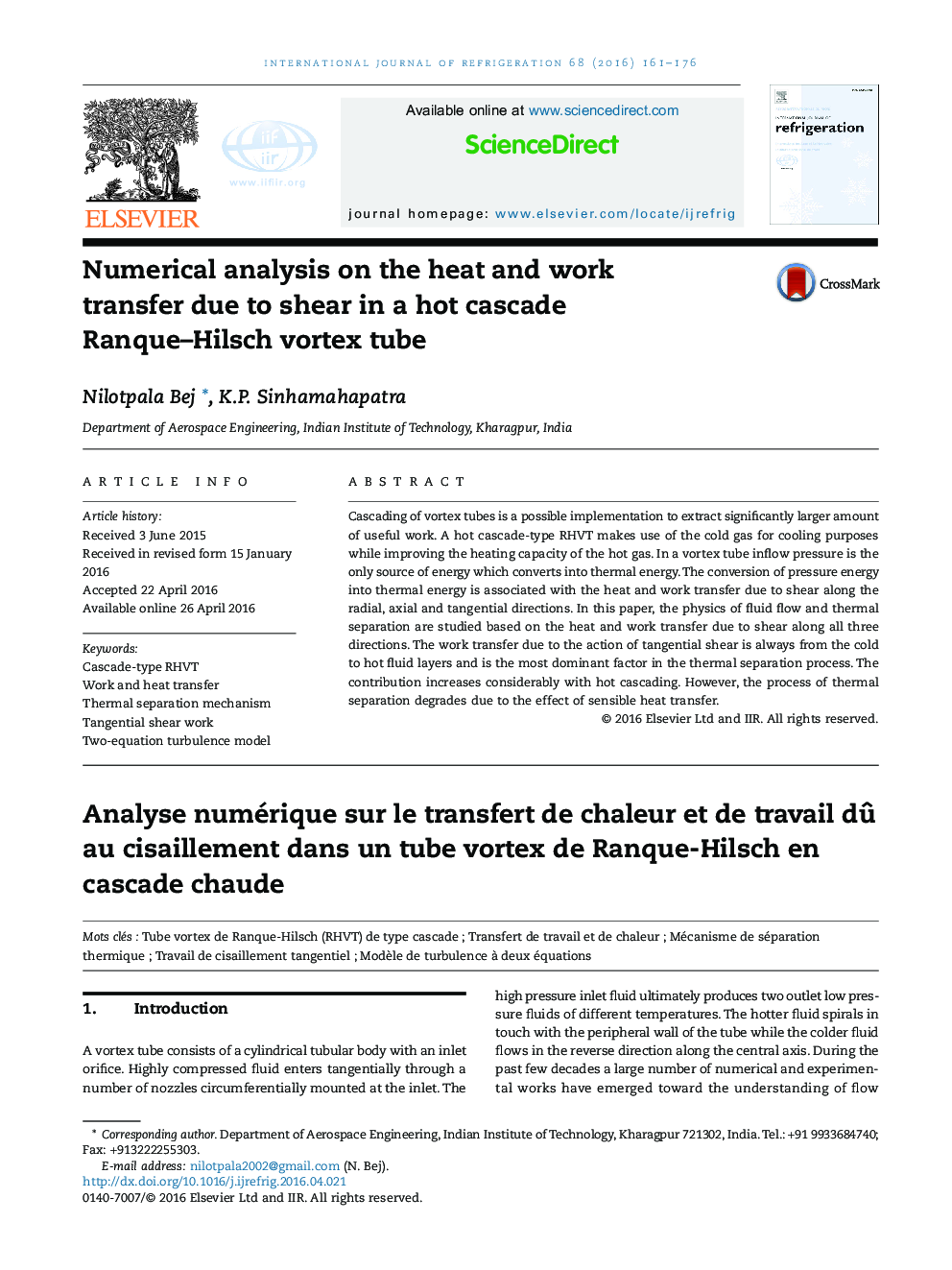| کد مقاله | کد نشریه | سال انتشار | مقاله انگلیسی | نسخه تمام متن |
|---|---|---|---|---|
| 786635 | 1466397 | 2016 | 16 صفحه PDF | دانلود رایگان |

• Tangential shear work is the predominant driving mechanism of thermal separation process.
• Most of the energy separation occurs within an axial span of x/L = 0.17 to 0.50.
• Highest energy separation is achieved when first-stage cold fraction is 0.5 and second-stage cold fraction is 0.3–0.4.
• Sensible heat transfer degrades the performance of vortex tube.
Cascading of vortex tubes is a possible implementation to extract significantly larger amount of useful work. A hot cascade-type RHVT makes use of the cold gas for cooling purposes while improving the heating capacity of the hot gas. In a vortex tube inflow pressure is the only source of energy which converts into thermal energy. The conversion of pressure energy into thermal energy is associated with the heat and work transfer due to shear along the radial, axial and tangential directions. In this paper, the physics of fluid flow and thermal separation are studied based on the heat and work transfer due to shear along all three directions. The work transfer due to the action of tangential shear is always from the cold to hot fluid layers and is the most dominant factor in the thermal separation process. The contribution increases considerably with hot cascading. However, the process of thermal separation degrades due to the effect of sensible heat transfer.
Journal: International Journal of Refrigeration - Volume 68, August 2016, Pages 161–176